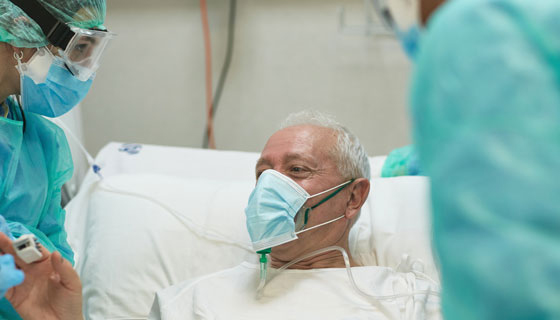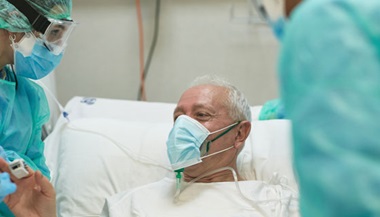Endoscopic Submucosal Dissection
If you have a tumor or a lesion within the lining of your gastrointestinal tract, your doctor may recommend removing it with a procedure called endoscopic submucosal dissection.
What is endoscopic submucosal dissection?
Endoscopic submucosal dissection (ESD) is a minimally invasive procedure that uses a flexible, tube-like tool called an endoscope to remove precancerous and cancerous areas in the gastrointestinal (GI) tract. “Submucosal” means this procedure targets tumors located under the lining of the GI tract (mucosa). These tumors can be close to muscle tissue and can be difficult to remove completely with other methods.
Gastroenterologists (doctors specially trained to treat the GI tract) perform this procedure. Depending on where in the GI tract the tumor is located, the doctor will insert the endoscope through the mouth for upper GI tumors or through the anus for lower GI tumors. ESD is typically an outpatient procedure and most people go home the same day.
Only a few centers in the United States perform ESD because the procedure requires a high degree of expertise and precision.
Who may need endoscopic submucosal dissection?
The ESD procedure can be used to treat the following tumors and lesions that involve the submucosa, the layer between the lining of internal organs and the muscle wall:
- Barrett’s esophagus
- Early-stage cancerous tumors or colon polyps, including colorectal cancer, stomach cancer and esophageal cancer.
- Tumors of the esophagus, stomach or colon that have not yet entered the deeper layer of the GI wall
ESD may be a more effective option than endoscopic mucosal resection (EMR) for removing certain growths, especially those without clear borders or those too large to remove in one piece by other methods. Using ESD in these cases can help minimize the risk of cancer spreading.
ESD can help your doctor stage GI cancer (determine its spread) to help customize your treatment plan.
Endoscopic Submucosal Dissection (ESD) | Eileen’s Story
Preparing for Endoscopic Submucosal Dissection
Your gastroenterologist will provide detailed instructions on how to prepare for ESD. Steps to take before the procedure may include:
- For a lower GI tract procedure, follow a liquid diet plus a laxative or enema to cleanse the bowel.
- For an upper GI tract procedure, do not eat or drink for 12 hours before the procedure to ensure your esophagus is clear of food.
- Tell your doctor if you have any allergies.
- Follow your doctor’s pre-procedure directions carefully. Call the office if you have questions about your instructions.
- Make sure you have someone to drive you home after your procedure since you will be receiving medication to make you sleepy.
What Happens During Endoscopic Submucosal Dissection
During the ESD procedure, your gastroenterologist will:
- Insert an IV to deliver a sedative to make sure you don’t feel pain.
- Place a high-definition endoscope through your mouth or your anus, depending on the location of the tumor.
- Observe the images on a screen to avoid damage to surrounding tissue during the procedure.
- Locate the tumor and mark its borders with a special tool passed through the tube of the endoscope.
- Inject the layer beneath the tumor or lesion with a solution to separate it from the muscle wall. This helps minimize damage to surrounding tissue during the procedure.
- Use an electrosurgical knife with a high-frequency electrical current to “cut” tumor tissue free from the GI wall. The electrical current seals blood vessels to reduce bleeding.
- Remove the tissue from the body through the endoscope and send it to a laboratory for examination by a pathologist.
Recovery After Endoscopic Submucosal Dissection
After the ESD procedure, you will be monitored in a recovery room while the sedative wears off. Your doctor will discuss your results with you before you leave.
The pathologist’s examination of tissue samples under a microscope can confirm whether the procedure has completely removed the tumor.
As you recover, you may experience:
- Sore throat if the endoscope was passed through your mouth.
- Upset stomach or vomiting if your stomach or intestine were treated.
- Excessive gas, bloating or cramping, especially if the doctors inflated the abdomen with air during treatment.
A Rare, Stomach-Saving Endoscopic Procedure

“A lot of people in the U.S. don’t know about endoscopic submucosal dissection,” says gastroenterologist Saowanee Ngamruengphong. She discusses a recent case involving this procedure.







